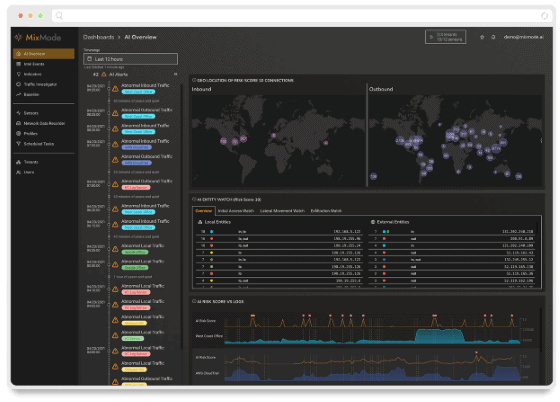Operational Technology (OT) networks and Industrial Control Systems, the backbone of critical infrastructure, have traditionally operated in isolation and designed more for reliability and efficiency than security. The increasing convergence of IT and OT systems, driven by digital transformation and the Internet of Things (IoT), promises to revolutionize industries from manufacturing and energy to healthcare and transportation.
Integrating information technology with operational technology can significantly improve an organization’s efficiency, productivity, and decision-making. Unfortunately, the journey is fraught with challenges that require careful consideration and strategic planning and have exposed these networks to a growing array of cyber threats.
Cultural Divide
The cultural divide between the two teams is among the most significant hurdles to IT and OT convergence. IT professionals often prioritize innovation, agility, and risk-taking, while OT teams focus on industrial processes that drive reliability and stability to avoid downtime. This difference in mindset can lead to conflicts and misunderstandings, hindering collaboration.
Interoperability Challenges
IT and OT systems were designed with different objectives, using disparate protocols, data formats, and communication standards. Integrating these systems requires careful planning and the development of appropriate adapters and gateways. Additionally, ensuring seamless data exchange and synchronization can be complex and time-consuming.

Skills Gap
The convergence of IT and OT demands a new skill set. Professionals who can bridge the gap and network segmentation between the two domains are in high demand. Organizations must invest in training and development to equip their workforce with the necessary competencies.
Risk Management
The potential consequences of failures in Industrial networks are far more severe than those in IT. Downtime can lead to significant financial losses and even physical harm. A robust risk management framework is essential to identify, assess, and mitigate potential IT and OT convergence risks.
Regulatory Compliance
Industries, including energy, healthcare, and manufacturing, are subject to stringent regulations. Ensuring compliance with these regulations while integrating IT and OT systems can be challenging. Organizations must carefully evaluate the impact of convergence on regulatory requirements and develop strategies to maintain compliance.
The OT Security Blind Spot
The convergence of IT and OT systems has expanded the attack surface, making OT networks increasingly vulnerable to security risks. Unlike their IT counterparts, OT systems often lack fundamental security controls such as firewalls, intrusion detection systems, and robust endpoint protection. These systems were built for a different era, prioritizing functionality over security. Moreover, the long lifecycles of OT equipment make it challenging to implement timely security updates and patches, leaving them susceptible to known vulnerabilities.
Security Concerns
OT environments, traditionally isolated, are now exposed to a broader range of threats. Protecting critical infrastructure from malicious actors requires a robust security framework that addresses the unique vulnerabilities of both IT and OT systems and closes security gaps.
Advanced persistent threats (APTs) pose a particularly significant risk to OT environments. These sophisticated attacks are designed to evade traditional security measures and can lie dormant within a network for extended periods, making detection and response extremely difficult. The consequences of a successful OT attack can be catastrophic, leading to physical damage, financial loss, and reputational harm.

Traditional Solutions Fall Short
Traditional security solutions are designed for IT networks and often fall short in the OT domain. The unique characteristics of industrial networks, such as air-gapped environments, specialized protocols, and extended equipment lifecycles, necessitate a tailored approach.
Key Security Concerns in IT-OT Convergence
- Lateral Movement: Threat actors can exploit vulnerabilities in IT systems to gain access to OT networks, moving laterally within the environment.
- Data Exfiltration: Sensitive operational data can be stolen and used for malicious purposes, such as industrial espionage or blackmail.
- Disruption of Operations: Cyberattacks can lead to production downtime, financial losses, and reputational damage.
- Physical Damage: In critical infrastructure sectors, cyberattacks can result in physical damage to equipment or facilities.
The Need for a Strategic Approach
Overcoming these challenges requires a strategic approach that involves close collaboration between IT and OT teams, investment in technology and personnel, and a strong focus on risk management. By successfully navigating these complexities, organizations can reap the benefits of IT and OT convergence and gain a competitive advantage.
Bridging the Gap
Historically, IT and OT teams have operated in silos, with limited communication and collaboration. This siloed approach has hindered the development of comprehensive security strategies. Bridging the gap between IT and OT is crucial for effective OT security. By fostering closer collaboration, sharing knowledge, and implementing unified security practices, organizations can leverage IT security expertise to enhance OT defenses while ensuring that security measures do not disrupt operations.
The Rise of AI for Securing IT/OT Convergence
Advanced AI-driven threat detection solutions are essential for addressing the complexities of OT security. These solutions can analyze vast amounts of data from OT systems to identify anomalies and potential threats in real-time. By leveraging machine learning and artificial intelligence, these platforms can learn and adapt to evolving threat landscapes, providing organizations a proactive defense against cyberattacks.
A Strategic Approach: MixMode for OT Security
MixMode offers a robust solution to address the challenges of securing OT networks. By leveraging our AI-driven threat detection capabilities, organizations can:
- Detect threats early: MixMode’s advanced AI analyzes vast amounts of data from IT and OT environments to identify abnormal behavior indicative of a cyberattack.
- Gain visibility and control: The MixMode Platform provides deep insight into OT networks, allowing organizations to understand their networked asset inventory and threats against them.
- Achieve contextual awareness: The MixMode Platform can correlate events across an IT/OT environment by analyzing data from various sources to identify potential threats more effectively.
- Mitigate risks: The MixMode Platform helps organizations prioritize risks, allocate resources efficiently, and implement targeted security measures.
Key Benefits of The MixMode Platform:
- Enhanced Threat Detection: Pre-emptive identification of abnormal activity to help identify potential threats.
- Improved Response: Faster response times and reduced impact of cyberattacks.
- Risk Reduction: Comprehensive understanding of the attack surface and ability to prioritize mitigation efforts.
- Reduced False Positives: Focus on real threats, not wasted investigations.
Securing OT networks requires a comprehensive and multi-layered approach. MixMode provides a powerful solution to help organizations build a resilient security posture. By leveraging MixMode’s capabilities, organizations can safeguard critical infrastructure and mitigate the risks associated with IT-OT convergence.
Click here to read how MixMode secured the City of Phoenix’s critical infrastructure, and then reach out to learn more about how MixMode can help secure your OT environment.
Other MixMode Articles You Might Like
The New Era of Cybersecurity: Gartner’s Vision for Preemptive Defense
The Rise of Cyberattacks on Critical Infrastructure: Are You Prepared?
MixMode Recognized By USA Today As One Of The Top 10 AI Companies To Watch in 2024
Air-Gapped Systems Breached: A Deep Dive into the Attack and Prevention

